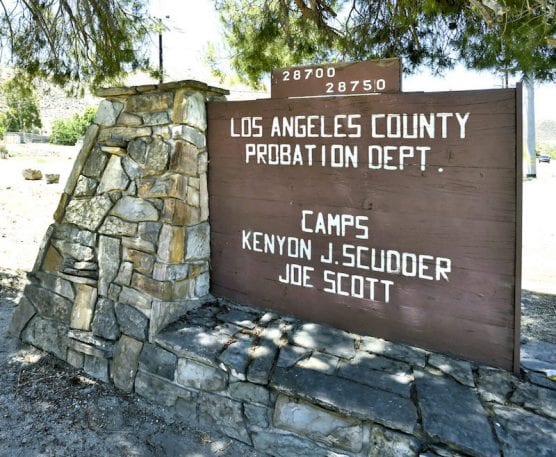Santa Clarita officials have sent letters to the Los Angeles County Board of Supervisors ahead of a Tuesday vote on the creation of a permanent juvenile-detention facility at Camp Joseph Scott or Camp Kenyon Scudder, which are both in Saugus, contending the project requires a comprehensive assessment before continuing.
If approved, the board motion would adopt a state subcommittee’s recommendations to move violent youth offenders to the Saugus facilities, which were originally designed to host non-violent youth offenders, while directing the county “ensure that the appropriate renovations are made at Scott or Scudder within 90 days to be safe and ready for use.”
However, the City Council is urging the board to table the item until the subcommittee conducts a comprehensive assessment of the facilities, including a proper land use and environmental review, dictated by the California Environmental Quality Act, as well as consultation with local officials and engagement and meetings with Santa Clarita residents.
The February board decision that set the plan in motion directed the subcommittee to consult with local justice, health, community and other relevant stakeholders in developing the plan for the county’s Department of Juvenile Justice population — a step the City Council said was not taken.
“The city and members of the Santa Clarita community were never notified or invited to any meetings held by the subcommittee or consulted with,” the council’s letter stated, adding that city officials were only informed of the recommendations through word of mouth from community members and social media.
The City Council went on to note that neither Camp Scott nor Scudder were mentioned in the original assessments for Youth Justice Reimagined — a set of recommendations made by the county’s Youth Justice Work Group to reimagine a county justice system that “centers on youth development and wellbeing” — though the report does dedicate “significant analysis and consideration to other existing juvenile facilities that could potentially be used for the intended DJJ population.”
Of the alternative proposed locations was Camp Kilpatrick, a juvenile detention camp located in the Santa Monica Mountains that was recently renovated in 2017 with more than $45 million in investments to the security and implementation of the “care first” model, according to the council.
The council also cited a L.A. County Sheriff’s Department report released last month that found that both Saugus facilities are unsuitable and “could not safely house the intended DJJ population” without major security improvements to accommodate violent youth offenders.
Additionally, the letter contends there are significant environmental issues with the plan, such as the facilities’ location in both a high-risk flood and fire area, along with its proximity to surrounding communities, including the 375-unit residential project recently approved for construction approximately 700 feet from the facilities.
“Had a proper environmental document been performed, many of these issues would have surfaced as part of a larger analysis of the appropriate use of this location,” the council letter added.
Multiple local residents voiced their opposition to the move during the City Council’s meeting on the issue last month. Members of the L.A.-based Anti-Recidivism Coalition, including their executive director, Sam Lewis, who lives in Santa Clarita, shared their own experiences as youth offenders who have since turned their lives around, advocating for the camps as a place for more youth offenders to do the same.
The City Council voted unanimously to formally oppose the plan after hearing from residents who cited impacts on public safety, property values and traffic in Bouquet Canyon.
“It’s just reckless and hasty to say the least,” Santa Clarita Mayor Bill Miranda said in a previous interview with The Signal. “The subcommittee which made this recommendation has not even spent any time talking with our community. In addition, no outreach or communication regarding this plan has been made to the city, or to myself or to any of my fellow council members.”
The council letter concludes that because a final plan is not due to the state until Jan. 1, 2022, it is critical that the board utilize the remaining time to ensure the decisions made are in the best interest of both the youth housed in the facilities as well as those residing in the surrounding communities near them.
Like this:
Like Loading...
Related





 Tweet This
Tweet This Facebook
Facebook Digg This
Digg This Bookmark
Bookmark Stumble
Stumble RSS
RSS




























REAL NAMES ONLY: All posters must use their real individual or business name. This applies equally to Twitter account holders who use a nickname.
0 Comments
You can be the first one to leave a comment.